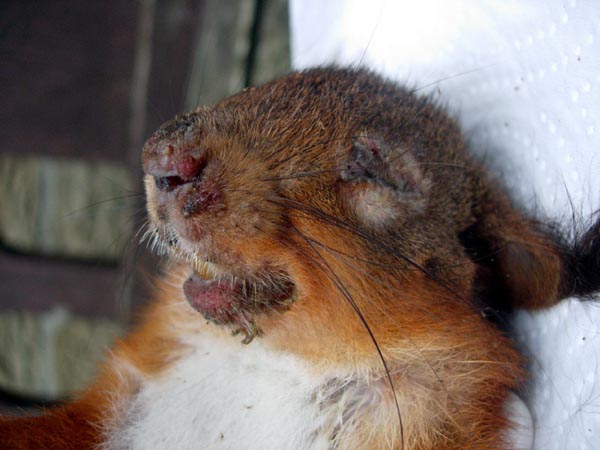
SCOTS have been urged to stop feeding red squirrels because they are likely to be condemning the protected animals to a slow, agonising death.
Kind-hearted homeowners who put out nuts and other treats for the reds are unwittingly exposing the creatures to the deadly squirrelpox virus.
That is because red and grey squirrels are likely to eat at the same place and while greys carry the virus it is only reds who succumb to it.
Experts say greys are moving in to Scotland from south of the border, carrying the disease with them.
The bodies of at least two red squirrels, both killed by the virus, have been discovered recently.
The main symptoms of the bug are lesions or scabs around the feet and eyes of the squirrel, along with lethargic movements. The animals often take two weeks to die.
Pleasure
The organisation Red Squirrels in South Scotland say garden feeders are potentially lethal to the home-grown species.
Organiser Karen Ramoo said: “We desperately need the public to help us stop the disease from spreading.
“We would like people in the area to stop feeding red squirrels at feeders in their gardens for the time being.
“We know that seeing reds at feeders gives people an enormous amount of pleasure but feeders are a focal point for squirrel to squirrel disease transmission and thus increases the likelihood of the disease spreading.”
An outbreak of squirrelpox was detected by the organisation around the River Tweed in Berwickshire.
A post mortem at the Royal Dick Vet school in Edinburgh confirmed a squirrel was positive for squirrel parapoxvirus, better known as squirrelpox.
The study was conducted yesterday (wed), confirming fears the virus has spread into Scotland.
There are fears English greys may mix with Scottish greys in the Central Belt and spread the disease further across the countryside.
Ms Ramoo said: “A lot of grey squirrels who carry the virus are coming up from England.”
She said the migration of disease-carrying greys was down to the ‘natural movement’ of the animals, which can include territorial males looking for new mates.
Ms Ramoo added: “The control of grey squirrels and the squirrelpox virus they carry is of paramount importance in our efforts to saveScotland’s red squirrels.
“The squirrelpox virus is the single biggest threat to the survival of our native red.
Threat
“Scotland is now home to over 75% of the surviving UK red squirrel population but incursion by greys is now the single largest threat.”
Ms Ramoo hopes the outbreak can be contained by ‘intensive’ action against grey squirrels around the river Tweed.

This can include the placing of squirrel traps, and the organisation is operating a loan scheme for traps.
Ms Ramoo continued: “It is our hope that with continued and increased support from the public we will continue to watch red squirrels flourish.
“It can be contained, there have been outbreaks in the past.”
The call for squirrel lovers to stop using garden feeders may be a temporary one, she added.
Property management firm Bell Ingram recently received a £400,000 grant from the Scottish Government to combat grey squirrels
The company will use humane live capture traps over a five year period to tackle the grey population.
Catherine Gilfillan, or Bell Ingram, said: “We have to control the grey squirrel population as it is the only way that the native red squirrel will be able to survive. For everyone involved in the project, the main aim is to see more of these beautiful animals inScotland’s countryside once again, and preventing the northward migration of greys.”
Estates involved in the regime must meet the minimum requirements of five sessions of eight days from January to December each year.

